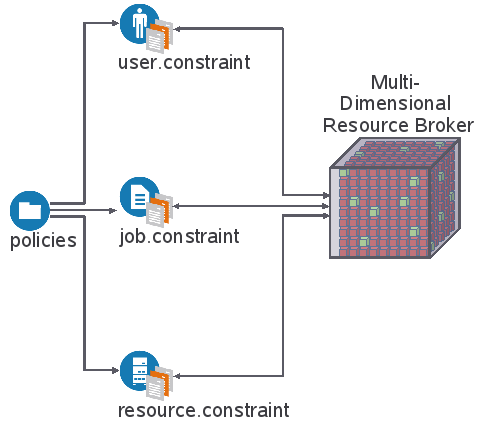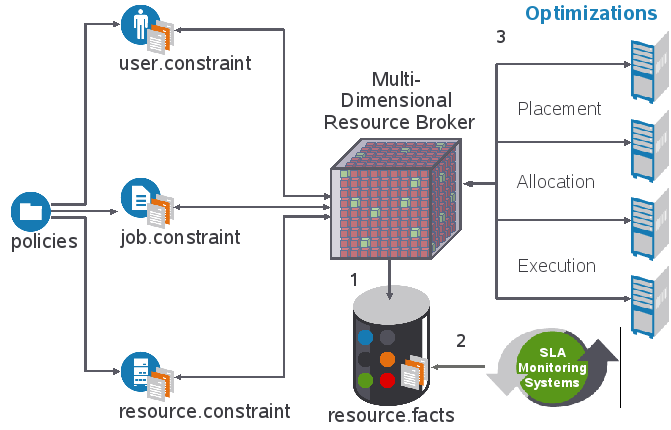4.2 Resource Selection
PlateSpin Orchestrate lets you create jobs that meet the infrastructure scheduling and resource management requirements of your data center, as illustrated in the following figure.
Figure 4-1 Multi-Dimensional Resource Scheduling Broker

There are many combinations of constraints and scheduling demands on the system that can be managed by the highly flexible PlateSpin Orchestrate resource broker. As shown in the figure below, many object types are managed by the resource broker. Resource objects are discovered (see Section 4.1, Resource Discovery). Other object types such as users and jobs can also be managed. All of these object types have “facts” that define their specific attributes and operational characteristics. PlateSpin Orchestrate compares these facts to requirements set by the administrator for a specific data center task. These comparisons are called “constraints.”
A policy is an XML file that specifies (among other things) constraints and fact values. Policies govern how jobs are dynamically scheduled based on various job constraints. These job constraints are represented in the following figure.
Figure 4-2 Policy-Based Resource Management Relying on Various Constraints

Figure 4-3 Policy-Based Job Management

See Section 8.0, Job Scheduling for examples of scheduling jobs. See also Section 7.7, Working with Facts and Constraints.
The Resource Broker function of the Orchestrate Server allocates or “dynamically schedules” resources based on the runtime requirements of a job (for example, the necessary CPU type, OS type, and so on) rather than allocating a specific machine in the data center to run a job. These requirements are defined inside a job policy and are called “resource constraints.” In simpler terms, in order to run a given job, the Resource Broker looks at the resource constraints defined in a job and then allocates an available resource that can satisfy those constraints.